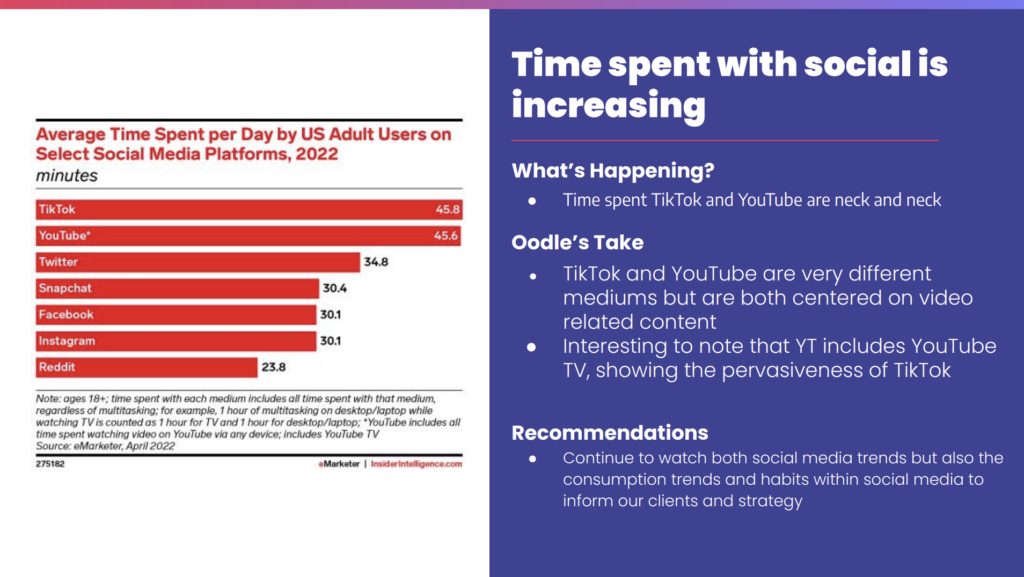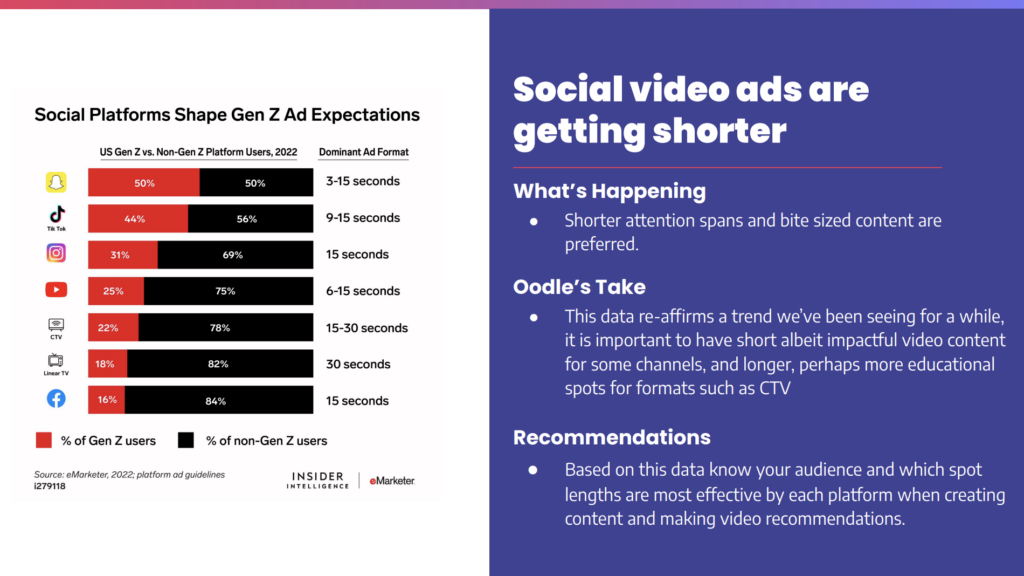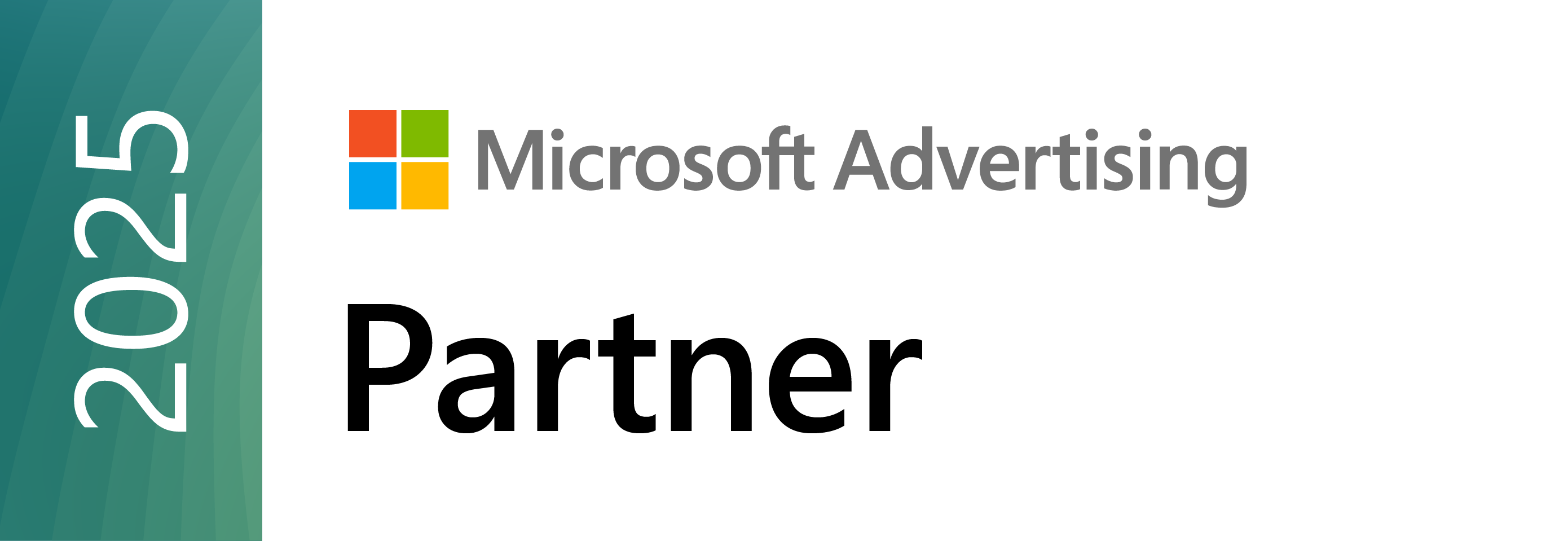
If you’re looking to level up your organic or paid social in 2023, Oodle can help you build, grow, or transform your brand!
In 2023, social media continues to be a critical channel for engaging users, with US adult users spending an average of 45 minutes per day on TikTok and YouTube. Short and impactful video content is proving to be the key to success in social video advertising, with dominant ad formats on social platforms ranging from 3-15 seconds. However, longer formats are still effective for educational spots on linear TV and connected TV. Customized video plans for each platform are essential, as demographics vary across social channels.
US adult users are spending more time on social media platforms: US adult users average 45 minutes per day on both TikTok and YouTube.
Social video ads are getting shorter in length: In 2022, dominant ad formats on social platforms ranged from 3-15 seconds. Connected TV and Linear TV have shown results with dominant ad formats ranging from 15-30 seconds.

While TikTok and YouTube are very different platforms with different video mediums, both are centered on tailoring related video content for users. While data from Insider Intelligence shows time spent on TikTok and YouTube are neck-and-neck, their YouTube average time spent per day included YouTube TV, meaning that users likely spend significantly less time on YouTube vs TikTok.

Shorter attention spans mean that video ads with shorter formats are seeing better results. The latest data from Insider Intelligence continues to show a trend Oodle has observed over the past 2+ years: short and impactful video content for social platforms is showing increased results compared to tests with longer ad formats. Longer formats still perform well for educational spots on formats like linear TV and connected TV (CTV)
Social media continues to be a great channel to engage users. Users are spending a significant amount of time on social media daily and advertisers are seeing results when engaging them with ads. Oodle recommends engaging users with video on social media channels to generate demand.
Social video ads are getting shorter, while TV ads still see success between 15 and 30 seconds. Testing video ad formats is important when trying to engage users across various platforms. Because high-performing video length varies by platform, Oodle recommends testing 6-, 15-, and 30-second videos across platforms. Depending on the platform, we also test 2-minute videos as well.
Having custom creative and custom plans for each platform is important because we see demographics vary across social channels. We frequently run audience analyses to identify which platforms resonate with our client-partners’ audiences. Popular platforms don’t always yield great results. Instead, it’s important to go where the audience is.
You’ve come to the right place! If you need help leveraging Social Video to build, grow, or transform your brand, you can set up a consultation with Oodle to get started!
Get marketing insights that actually move the needle — directly in your inbox.



